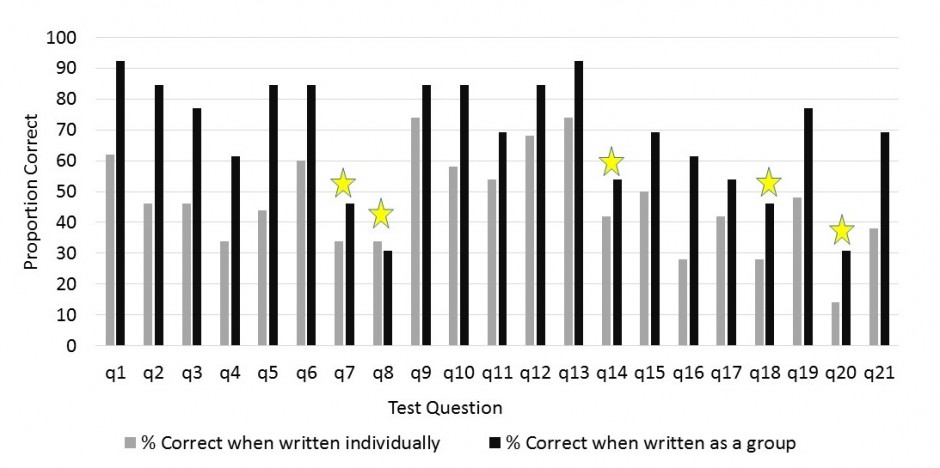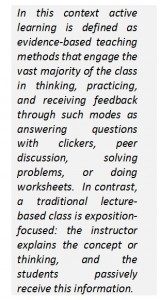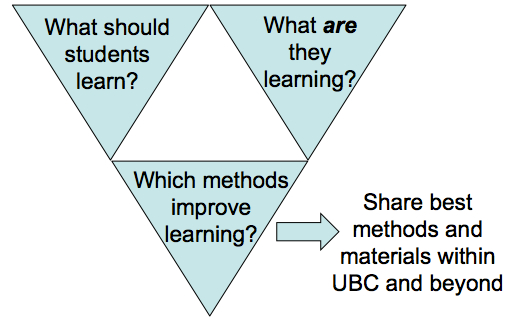Writing good multiple choice questions can be tricky and time-consuming, especially coming up with incorrect options (distractors) that are not trivial. These distractors need to be tempting enough to get students to really think about the question and engage in meaningful discussion. In developing multiple choice questions, one good approach is to use distractors that are generated by students themselves – and we’ve seen this put into practice on the fly for clicker questions.
STLF Field Notes:
In Biology 200, Liane Chen does an awesome job at this practice. Student writing is a central element of the course, and so she gives them opportunities to practice their writing in class (which, in and of itself, is fantastic). As a short activity, Liane prompts students with a question and asks them to write down their responses (1-2 sentences). She keeps them accountable by letting the class know that she’ll be using their work for the clicker question. While students are working, she collects a few examples of their writing, and types them verbatim into a powerpoint slide.
Brin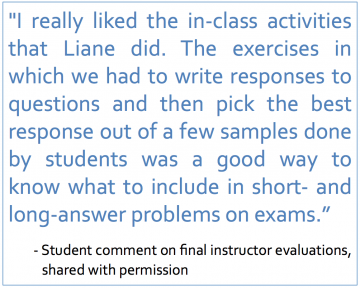 ging the group back together, these examples become the clicker options, which the students then discuss and evaluate. Sometimes there is a clear best answer, sometimes there are multiple best answers, and sometimes each answer can be improved upon. By facilitating the subsequent discussion, Liane helps the students develop critical evaluation skills, improve their own writing, and see the connection between in-class work and tests. And the students themselves recognize the value – she has received positive feedback on her final evaluations about this practice as well. Awesome!
ging the group back together, these examples become the clicker options, which the students then discuss and evaluate. Sometimes there is a clear best answer, sometimes there are multiple best answers, and sometimes each answer can be improved upon. By facilitating the subsequent discussion, Liane helps the students develop critical evaluation skills, improve their own writing, and see the connection between in-class work and tests. And the students themselves recognize the value – she has received positive feedback on her final evaluations about this practice as well. Awesome!
Beyond writing: other formats of student-generated work as clicker options
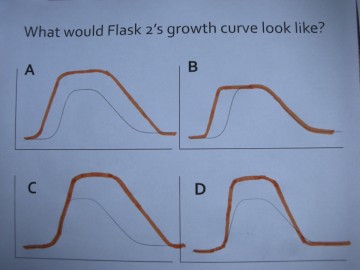
An example of student-generated graphs as clicker options. Following a question prompt, the instructor moved through the room, saw what students were drawing, and drew four of their answers (orange lines) on the printout (shown on the document camera). Instant clicker options, followed up by great discussion!
This approach is not limited to student writing. It also works with lots of other kinds of student work, such as diagrams and graphs using the document camera.
For example, you can have students draw graphs that make predictions about the results of a particular experiment. As they are drawing, you can walk around the room, and see the examples being drawn. (An example from Biology 112 is shown at right.) Making sure that one of the answers is correct, draw these graphs on the document camera, and have the students vote. From prior teaching, if you happen to know some popular misconceptions, you can spike those in as well. Either way, the options are authentic, the distractors tend to be quite compelling, and the ensuing discussion is powerful.
Other benefits to course alignment, assessment, and instructor prep time
Want to take it up a level, and further align your course material with the assessments? Some of the student-generated ideas in this type of class discussion can make great distractors for actual test questions. And when the students know that you’ll be doing this, it helps the instructor gain students buy-in to the classroom activities as well.
Using student answers to make clicker distractors on the fly is a fantastic approach that can foster great classroom discussion, and provides a chance for instructors to target authentic student struggles with the course material. Additionally, from a practical perspective, because you don’t have to come up with plausible distractors, it often takes less time to prepare these questions than more traditional clickers. Double win!
Have you tried this approach in your own courses? Can you think of other examples where this strategy might work? We’d love to hear your ideas about this and other classroom practices that you’ve observed in your own ‘field’ studies.
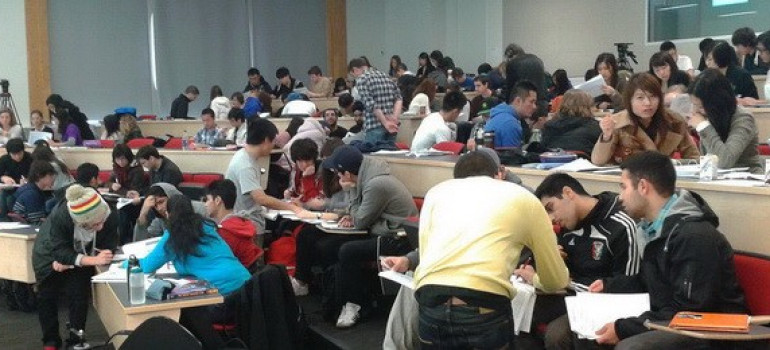
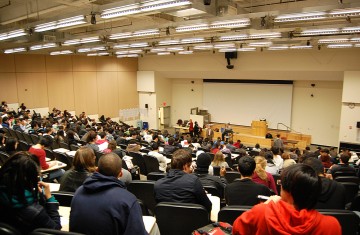
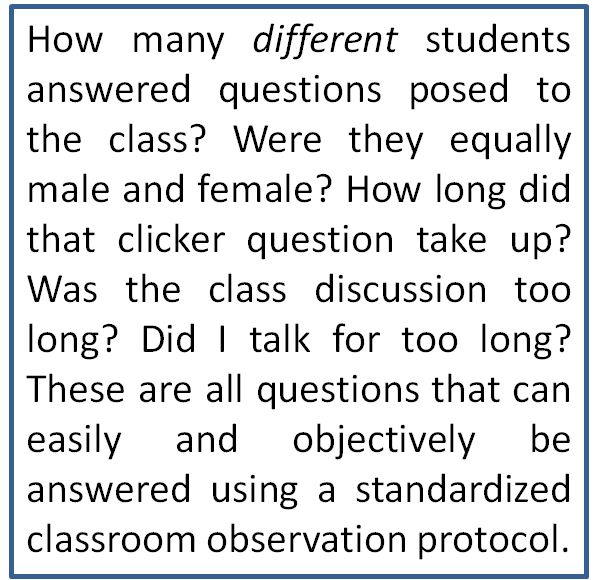

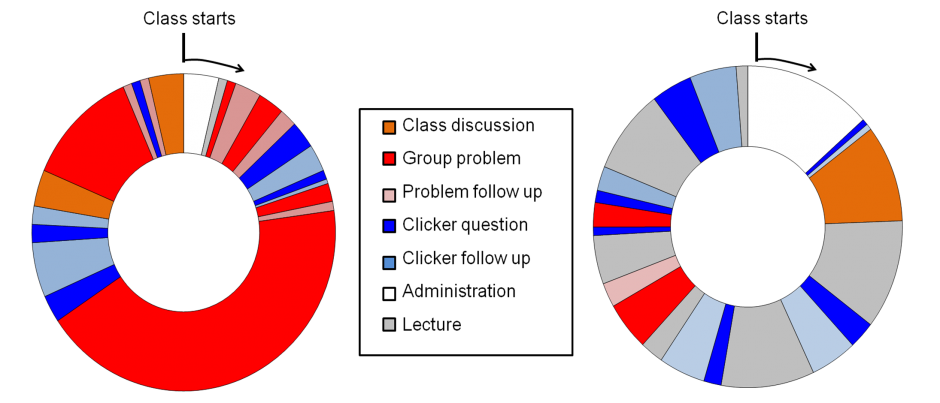
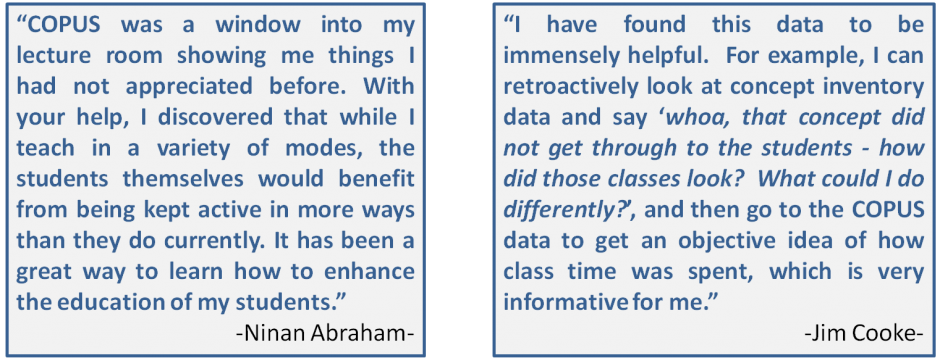
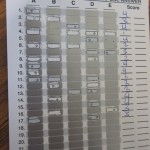
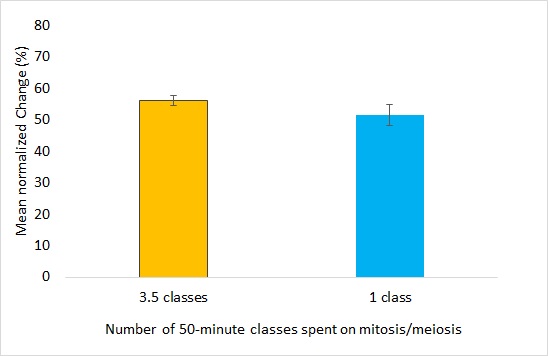 Figure 1. Reducing the amount of in-class time spent on mitosis and meiosis does not negatively impact student performance. The 3.5 classes session received in-class, “traditional” review. In comparison, the 1 class session received the two-stage review activity and extra-curricular practice problems. Mean normalized change represents the change in score from the pre-test (before teaching mitosis/meiosis) to the post-test (after teaching). Error bars are standard error of the mean. The means are not significantly different (p>0.05,t-test).
Figure 1. Reducing the amount of in-class time spent on mitosis and meiosis does not negatively impact student performance. The 3.5 classes session received in-class, “traditional” review. In comparison, the 1 class session received the two-stage review activity and extra-curricular practice problems. Mean normalized change represents the change in score from the pre-test (before teaching mitosis/meiosis) to the post-test (after teaching). Error bars are standard error of the mean. The means are not significantly different (p>0.05,t-test).